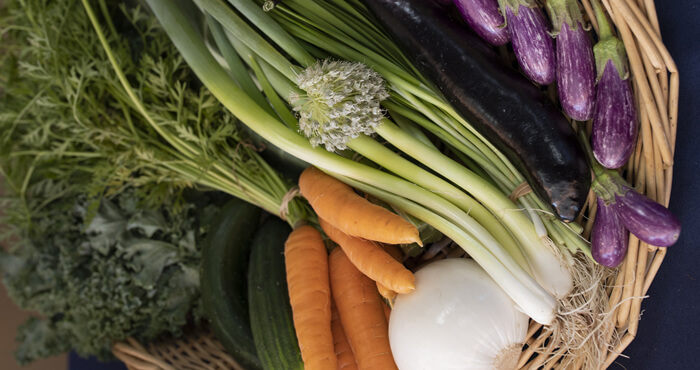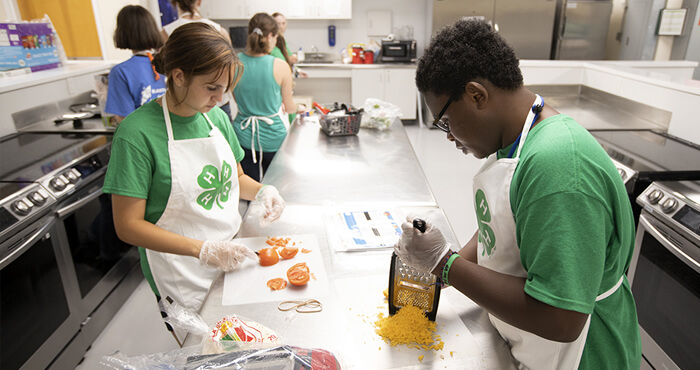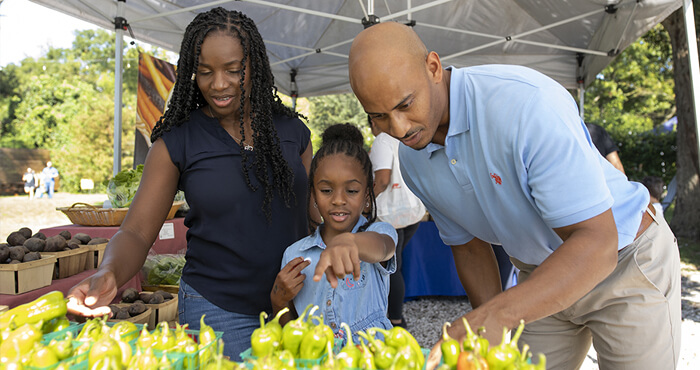
Community Supported Agriculture
What Is Community Supported Agriculture (CSA)?
A CSA is a community of individuals who pledge support to a farm operation in exchange for a share in crop harvests. The growers and consumers provide mutual support and share the risks and benefits of food production.
CSA members agree to directly support the local grower(s) through up-front (often monetary) contributions; in return, the growers try to provide the quantity and quality of food to meet the consumers’ needs and expectations.
The idea of “shared risk” distinguishes CSAs from simple subscription farming. In subscription farming, the grower owes the consumer any produce paid for. In CSAs, growers and members share the potential risk of crop failures or reduced harvests—even if it means the consumer gets less or none of the produce he paid for.
Why Join?
Consumers join CSAs for various reasons:
- Access to fresh and organic or pesticide-free produce.
- Access to produce that has not been shipped.
- Investment into locally owned and operated farms; support of local farmers.
- Access to foods that are unusual or unavailable in the supermarket.
- Increase participation in community and environmental awareness.
- Decrease in food costs.
- Involvement in and awareness of the food production process.
Types of CSAs
There are three types of CSAs:
- The farmer owns the land and equipment and does all or most of the labor. Members provide capital by buying shares.
- The farmer owns the land and equipment. Members provide capital and share in the labor.
- There is no farmer. The CSA owns the land and equipment, and members are responsible for all labor.
Most CSAs are found on a spectrum between the two extreme CSA options, with members contributing in additional, non-capital ways to the farm (e.g. special workdays, helping with distribution, or lowering payments through “working shares”).
Forming a CSA
In a CSA, farmers have a guaranteed income and market, so they can concentrate on producing crops and land stewardship. Members get fresh, local produce without having to manage a home garden by themselves.
Forming a CSA is easiest for farmers who own land and equipment, have experience growing vegetables for market, and have established customers. More obstacles arise for farmers without land or those without experience growing for market. However, many CSAs have found ways to get started despite obstacles.
8 Steps to Form a CSA
- Either farmers or groups of non-farmers call to form a CSA.
- Hold exploratory meeting of prospective shareholders and farmers.
- After meeting(s), come to agreement on the group’s values and commitment requirements.
- Organize the core group.
- Recruit members for the first season.
- Members make commitments to the CSA.
- Establish the legal status of the CSA. (Many defer decisions on legal structure for a season or two; advice from a lawyer may be helpful.)
- Determine capitalization of the farm(s). (Decisions must be made about long-term purchases and maintenance.)
For more information on CSAs and the details of forming a CSA, contact your local Extension agent and read the source document, "What is Community Supported Agriculture?"
Excerpted and adapted from:
M.E. Swisher, et al., "What is Community Supported Agriculture?" (FCS7212-Eng), Department of Family, Youth and Community Sciences (reviewed 01/2016).
RESOURCES
UF/IFAS Publications
- Agribusiness
- Agricultural Health and Safety
- Agronomy
- Crops
- Florida Forage Handbook
- Vegetables & Herbs
- Livestock and Poultry
- Nurseries and Greenhouses
- Florida Soil and Water - by County
- Sustainable Agriculture
- Weed Management in Field Crops and Pasture Grasses (WMG)
State & Federal Agencies
- Florida Department of Agriculture and Consumer Services (FDACS)
- Fish and Wildlife Research Institute—Florida Fish and Wildlife Conservation Commission
- Florida Department of Environmental Protection
- South Florida Information Access (SOFIA)—U.S. Geological Survey
- U.S. Department of Agriculture (USDA)
- U.S. Forest Service—USDA
- U.S. Environmental Protection Agency (EPA)
- U.S. Fish & Wildlife Service
- U.S. Geological Survey (USGS)



.jpg)

.jpg)